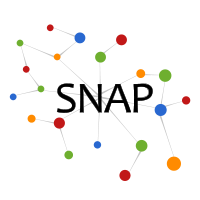Tutorial information
Researchers in network science have traditionally relied on user-defined heuristics to extract features from complex networks (e.g., degree statistics or kernel functions). However, recent years have seen a surge in approaches that automatically learn to encode network structure into low-dimensional embeddings, using techniques based on deep learning and nonlinear dimensionality reduction. These network representation learning (NRL) approaches remove the need for painstaking feature engineering and have led to state-of-the-art results in network-based tasks, such as node classification, node clustering, and link prediction.
In this tutorial, we will cover key advancements in NRL over the last decade, with an emphasis on fundamental advancements made in the last two years. We will discuss classic matrix factorization-based methods, random-walk based algorithms (e.g., DeepWalk and node2vec), as well as very recent advancements in graph neural networks. We will cover methods to embed individual nodes as well as approaches to embed entire (sub)graphs, and in doing so, we will present a unified framework for NRL.
The tutorial will be held at The Web Conference, 2018 (WWW) in Lyon, France, April 24th, 2018.
Tutorial materials and outline
- Part 0: Intro
(pdf)
(ppt)
- What is network representation learning and why is it important?
- Part 1: Node embeddings
(pdf)
(ppt)
- Learning low-dimensional embeddings of nodes in complex networks (e.g., DeepWalk and node2vec).
- Part 2: Graph neural networks
(pdf)
(ppt)
- Techniques for deep learning on network/graph structed data (e.g., graph convolutional networks and GraphSAGE).
- Part 3: Applications
(pdf)
(ppt)
- Applications of network representation learning for recommender systems and computational biology.
Biographies
All the organizers are members of the SNAP group under Prof. Jure Leskovec at Stanford University. The group is one of the leading centers of research on new network analytics methods. In recent years, the SNAP group has performed extensive research in the area of network representation learning (NRL) by publishing new methods, releasing open source code and datasets, and writing a review paper on the topic.
William L. Hamilton is a PhD Candidate in Computer Science at Stanford University. His research focuses on NRL as well as large-scale computational social science applications. He is the recipient of the SAP Stanford Graduate Fellowship, an Alexander Graham Bell Graduate Scholarship, and his work has been covered in the New York Times, Wired, and the BBC. He is the co-lead developer of GraphSAGE, a state-of-the-art open-source framework for NRL.
Rex Ying is a PhD Candidate in Computer Science at Stanford University. His research focuses on deep learning algorithms for network-structured data, and applying these methods in domains including recommender systems, knowledge graph reasoning, social networks, and biology. He is the co-lead developer of the GraphSAGE framework, and he has undertaken industry collaborations to apply this framework to real-world web-scale recommender systems.
Jure Leskovec is an associate professor of Computer Science at Stanford University. His research focuses on the analysis and modeling of large real-world social and information networks as the study of phenomena across the social, technological, and natural worlds. Problems he investigates are motivated by large scale data, the Web and Social Media. Jure received his PhD in Machine Learning from Carnegie Mellon University in 2008 and spent a year at Cornell University. His work received five best paper awards, won the ACM KDD cup and topped the Battle of the Sensor Networks competition.
Rok Sosic is a senior researcher in Prof. Leskovec's group at Stanford University, working on SNAP tools for large scale network analytics. He has published over 50 papers, including the best paper at Supercomputing'95 and a top 10 paper in the field of high-performance distributed computing. Rok received his PhD in Computer Science from University of Utah. He joined Stanford University in 2012.



